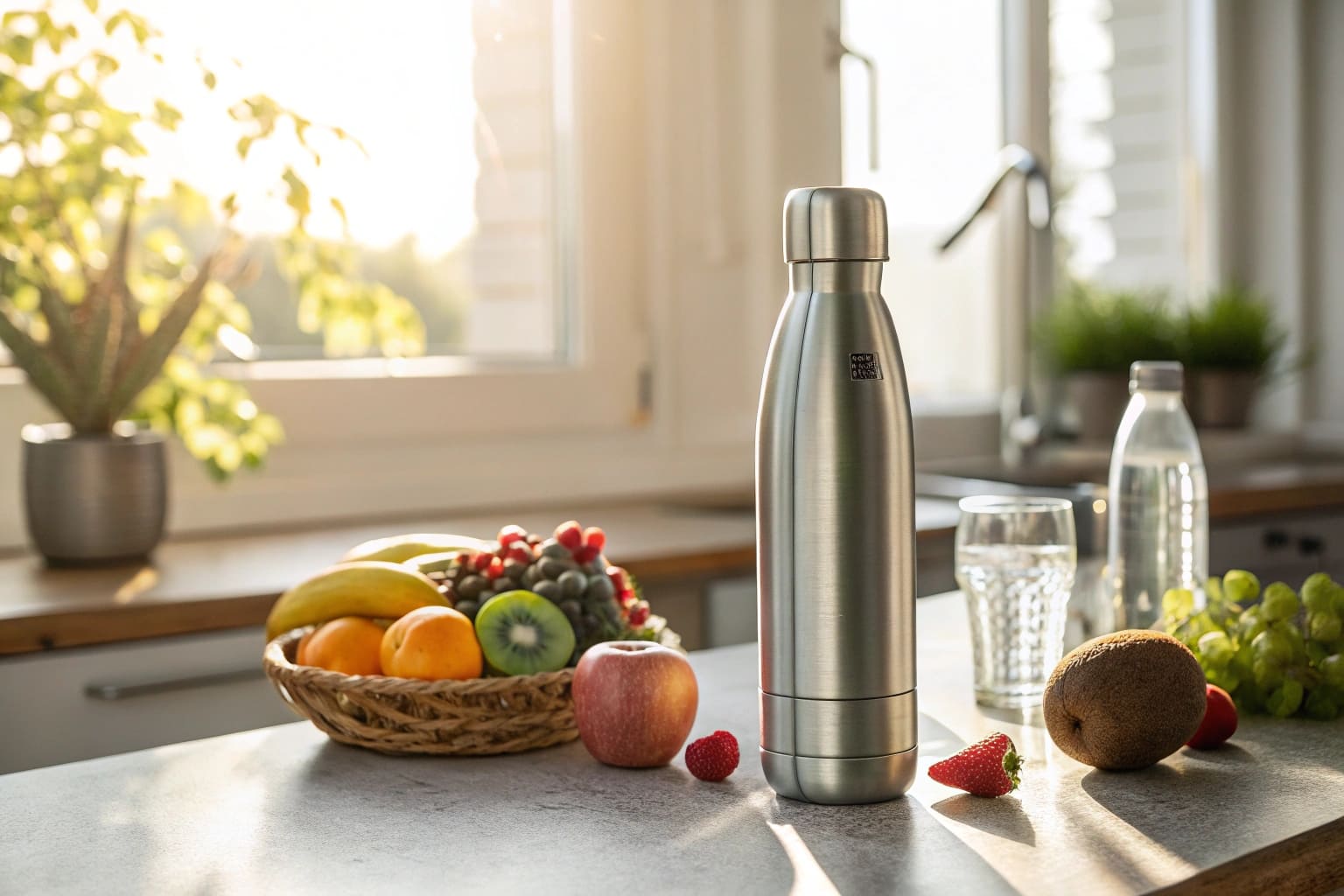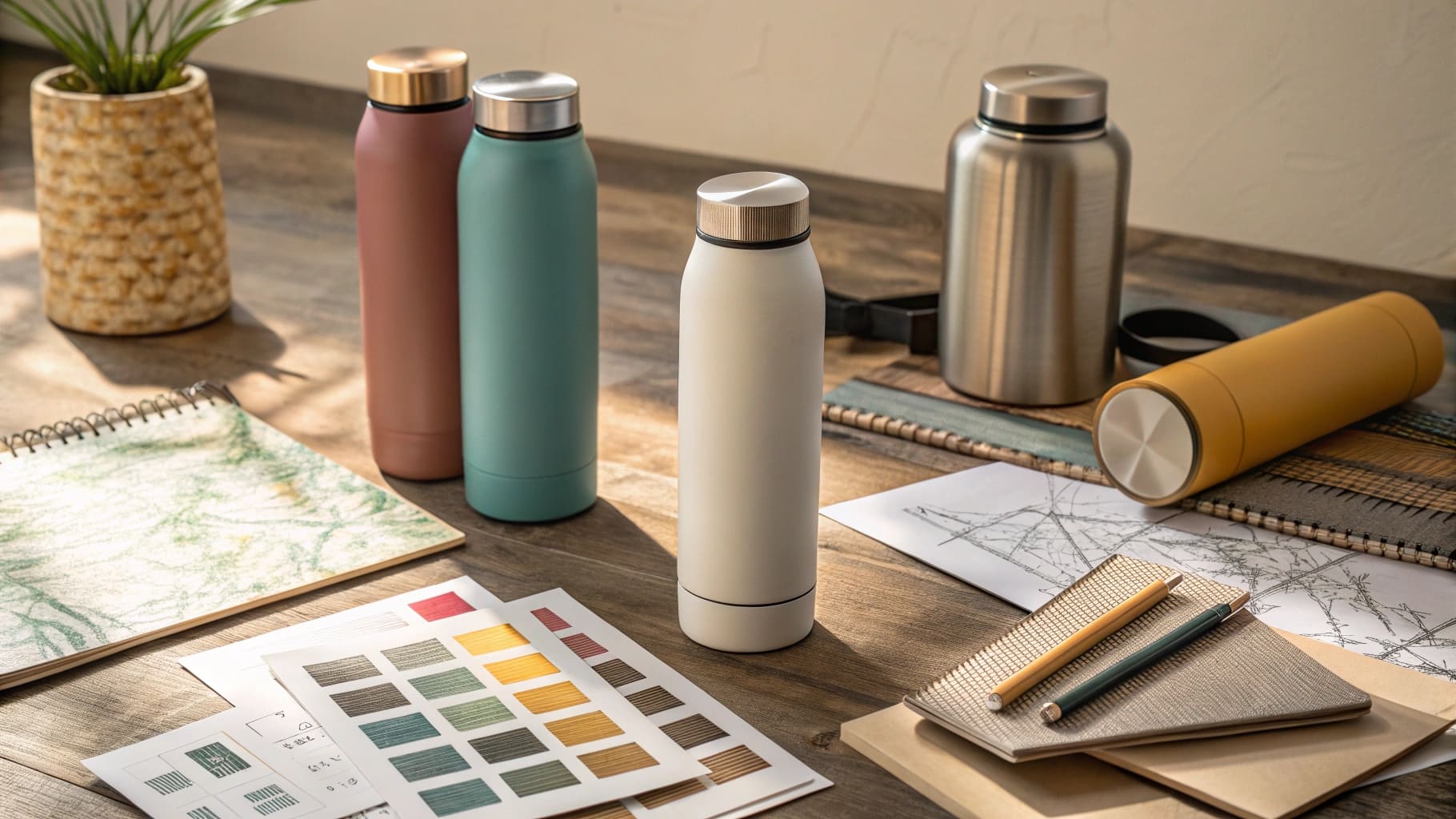You see a bottle with a sleek new design. But you know that looks alone don't build a successful brand. True success depends on what's beneath the surface.
No, innovative design is not enough. For business-to-business buyers, true value lies in performance, durability, and a transparent supply chain. Focusing on quality control, clear usage guidelines, and manufacturing excellence is what builds lasting trust with your customers and secures your brand's reputation in the market.

I've been in the stainless steel bottle business for years, and I can tell you that the most successful importers I work with look past the initial design. They ask the tough, practical questions. They understand that a happy end-consumer is the key to repeat business. The questions they ask are the ones that really define a product's quality and a supplier's reliability. Let's dive into the questions I hear most often from sharp buyers, because the answers are critical for anyone looking to build a profitable water bottle brand.
How Can You Reliably Test an Insulated Bottle's Performance?
You've just received a sample bottle. It looks great, but will it keep drinks hot or cold? A failed batch can destroy customer trust and your brand's reputation overnight.
To test an insulated bottle, fill it with boiling water and seal the lid tightly. The bottle's exterior should remain cool to the touch after a few minutes. For a full test, leave it for 12-24 hours and then measure the internal water temperature for heat retention.

When I work with new clients, especially assertive business owners like Mark from Canada, this is one of the first things we discuss. They need a simple, repeatable way to verify quality. A faulty vacuum seal is the most common failure point, and you can't see it with your eyes. Here's a breakdown of how you can test your samples thoroughly.
The Basic Touch Test
This is your first, immediate check. Fill the bottle about 90% full with boiling water and screw the lid on. Wait about 5 minutes. Now, carefully run your hand over the entire outer surface of the bottle. A properly insulated bottle has a vacuum between the inner and outer walls. This vacuum prevents heat from transferring. If you feel any hot spots on the body of the bottle, it means the vacuum is compromised, and the bottle is defective. It's a simple pass/fail test you can do in minutes.
The Temperature Drop Test
This is the more scientific method. It measures how well the bottle performs over time. You will need a simple food thermometer for this.
| Step | Action | Purpose |
|---|---|---|
| 1 | Boil Water & Measure | Fill the bottle and record the starting temperature (e.g., 95°C / 203°F). |
| 2 | Seal and Wait | Close the lid and let the bottle sit at room temperature. |
| 3 | Measure Again | After 12 and 24 hours, open the bottle and measure the temperature again. |
A high-quality bottle should still be very warm after 12 hours (around 60-70°C / 140-158°F) and warm after 24 hours. A poor-quality bottle will be near room temperature. Always test against the specifications your supplier provides.
What to Look For
Beyond the temperature, check the lid's seal for any leaks when you turn it upside down. When you open it after 24 hours, listen for a slight release of pressure. Consistent testing across a few samples from your shipment gives you the confidence that you're selling a product that truly delivers on its promise.
What Liquids Should You Never Put in an Insulated Bottle?
Your customers will want to put everything in their bottles. But some liquids can damage the bottle or even create a safety risk, leading to complaints and returns for your business.
Avoid storing carbonated drinks, dairy, or very acidic juices in your insulated bottle for long periods. Pressure from sodas can build up, while milk can spoil quickly and promote bacteria. High acidity can potentially affect the stainless steel interior over time, altering the taste.

Providing clear instructions to your customers is a mark of a responsible brand. It prevents misuse and shows you care about their safety and the longevity of the product. As a manufacturer, I always provide these guidelines to my B2B partners. It's crucial information that protects the end-user and, in turn, protects your business from liability and negative reviews. Here is a more detailed look at why certain liquids are not recommended.
The Problem with Pressure: Carbonated Drinks
Putting soda, sparkling water, or beer in a sealed insulated bottle is a bad idea. The carbonation is dissolved CO2 gas. In a sealed container, especially if it gets warm, this gas can escape the liquid and build up significant pressure inside. This can make the lid extremely difficult to open or, in a worst-case scenario, cause it to pop off forcefully upon opening.
The Risk of Spoilage: Dairy and Sugary Drinks
Insulated bottles keep things hot, but they are not a refrigerator. Milk and cream-based drinks can spoil quickly, even in a sealed container. The warm, dark environment is a perfect breeding ground for bacteria. This not only creates foul odors and tastes that are hard to remove but can also pose a health risk. The same goes for sugary juices if left for too long.
The Corrosion Concern: Acidic Beverages
High-quality 18/8 stainless steel is very resistant to corrosion. However, leaving highly acidic liquids like pure lemon juice or vinegar in the bottle for extended periods (days, not hours) is not recommended. Over time, it could potentially interact with the steel. For most people using the bottle for water with a slice of lemon, it's perfectly fine. The concern is with long-term storage of concentrated acids.
| Liquid Type | Safe for Short-Term? | Safe for Long-Term Storage? | Why? |
|---|---|---|---|
| Water, Coffee, Tea | Yes | Yes | Non-corrosive and no pressure build-up. |
| Carbonated Drinks | No | No | Pressure can build to dangerous levels. |
| Milk / Dairy | No | No | Spoils quickly, creating bacteria. |
| Acidic Juice | Yes | No | Long exposure can potentially affect the steel. |
Is It a Good Idea to Put Your Insulated Bottle in the Fridge?
Your customer wants their drink to be as cold as possible. Their first thought might be to put the whole bottle in the fridge. But does that actually work, or could it harm the bottle?
You can put an insulated bottle in the fridge, but it won't do much good. The vacuum insulation that keeps cold drinks from warming up also stops the cold air from the fridge from chilling the liquid inside. It's not harmful, but it is very ineffective.

This question comes up because it seems logical, but it's based on a misunderstanding of how the technology works. Explaining this to your customers helps them get the best performance from their product. When I onboard a new B2B client, I make sure they understand the basic science so they can sound like an expert to their own customers. This builds brand authority.
How Vacuum Insulation Works
Think of your bottle as having two walls: an inner one and an outer one. In the space between those walls, almost all the air has been removed, creating a vacuum. Heat needs a medium to travel through, either by conduction (touch) or convection (air currents). Since there's virtually nothing in that space, heat has a very difficult time moving from the outside in, or from the inside out. This is why the bottle's exterior doesn't get hot when filled with coffee, and it's also why the cold from a refrigerator can't get inside to chill the contents.
Why the Fridge Isn't Effective
Placing the bottle in the fridge is like trying to cool your house by putting an ice cube on the outside of your front door. The insulation is simply doing its job by resisting the temperature change. You might cool the outer steel wall of the bottle slightly, but that cold will not transfer to the liquid inside through the vacuum.
The Better Way to Chill
The most effective way to get a cold drink is to chill the liquid before you put it in the bottle.
- Pre-chill the liquid: Put your water, iced tea, or juice in the refrigerator first.
- Add ice: For maximum coldness, fill your bottle with ice and then pour in your pre-chilled beverage.
This method uses the insulation for its intended purpose: to preserve the temperature you start with, not to change it.
Are Famous Brands Like Stanley Actually Made in China?
Many buyers associate famous American or European brands with local manufacturing. They worry that "Made in China" means lower quality. This creates uncertainty when sourcing products.
Yes, almost all well-known brands of stainless steel bottles, including Stanley, are manufactured in China. This is because China has the world's most advanced and efficient infrastructure for producing high-quality stainless steel goods at scale, which these global brands rely upon for their supply chains.

This is a question I get from almost every new buyer from North America or Europe. There is a perception gap that we need to close with facts. As the owner of a Chinese manufacturing company, Icobottle, I take pride in the quality we produce for global brands. The key is to understand that the brand, not the country's name on the label, dictates the quality.
The "Made in China" Label
For decades, China has been the workshop of the world. This is especially true for stainless steel vacuum-insulated products. The expertise, specialized machinery, and skilled workforce are concentrated here. It's not about being "cheap," it's about being the best-equipped place in the world to make these specific products efficiently and to a high standard.
Why Brands Choose China
A brand like Stanley has a 100-year-old reputation to protect. They don't choose a manufacturing location based on cutting corners. They choose it based on capability. They require massive production runs, consistent quality control, and access to the best raw materials. Chinese factories like mine have invested heavily to meet these demands. We work with these brands to execute their vision, using their exact specifications for steel grade, insulation technology, and quality checks.
Quality is About the Brand, Not Just the Country
The quality of a Stanley bottle is determined by Stanley's standards, not the factory's location. They have their own teams on the ground for quality control and work only with audited factories that can meet their strict requirements. My company, Icobottle, works the same way with our clients. You provide the quality standard, and we are your partner in executing it. The "Made in China" label on a bottle from a reputable brand or a trusted supplier is a sign of manufacturing expertise. It means the product was made in the place best equipped to make it.
What Really Makes a Water Bottle Company the 'Best' in the World?
Every importer wants to find the "best" supplier. But they get overwhelmed by marketing claims and brand popularity, making it hard to know who to trust for their business needs.
The "best" company is different for consumers versus B2B buyers. For consumers, it might be a trendy brand. For your business, the "best" company is a manufacturing partner who delivers consistent quality, on-time shipments, and excellent, clear communication. It's about reliability, not just a logo.

I've seen many importers chase the factory that makes a famous brand, thinking that makes them the "best." But the best partner for your business is one that focuses on your needs. As a B2B supplier, my entire business model is built around being the best partner for importers, startups, and established brands looking to grow. It comes down to a different set of values compared to what a retail customer looks for.
Defining "Best" for Consumers vs. B2B Importers
The priorities are fundamentally different. A consumer is buying one bottle; you are buying thousands. A consumer is buying a finished product; you are buying a component of your brand's success. Your definition of "best" has to be focused on the health of your business.
| Valued By | Consumer (End-User) | B2B Importer (Your Business) |
|---|---|---|
| Top Priority | Brand Image & Design | Reliability & Quality Consistency |
| Key Factors | Color Options, Hype | Quality Control Process, Certifications |
| Communication | Customer Service (if there's a problem) | Proactive Communication, Production Updates |
| Price | Retail Price | Unit Cost, Lead Time, MOQ |
| Success Metric | Personal Satisfaction | Profitability, Low Return Rate, On-Time Delivery |
Key Attributes of a Great Manufacturing Partner
When you are looking for the "best" partner, ignore the retail hype. Focus on the core business metrics that prevent the pain points I hear about all the time, like communication delays and missed shipping deadlines.
- Clear, Efficient Communication: Your contact should understand your needs and respond quickly. You shouldn't have to chase them for updates.
- Robust Quality Control: They should have a documented QC process and be transparent about it. Ask for inspection reports.
- Verified Certifications: They must provide valid, current certifications (e.g., FDA, LFGB) and not hesitate when you want to verify them.
- Logistical Expertise: They need to understand global shipping and provide realistic production and delivery timelines.
- A Partnership Mentality: The best supplier acts as an extension of your team, focused on making your brand successful.
Conclusion
Innovative designs attract customers, but true brand loyalty is built on quality, reliability, and trust. Focus on these fundamentals to build a business that lasts for the long term.

